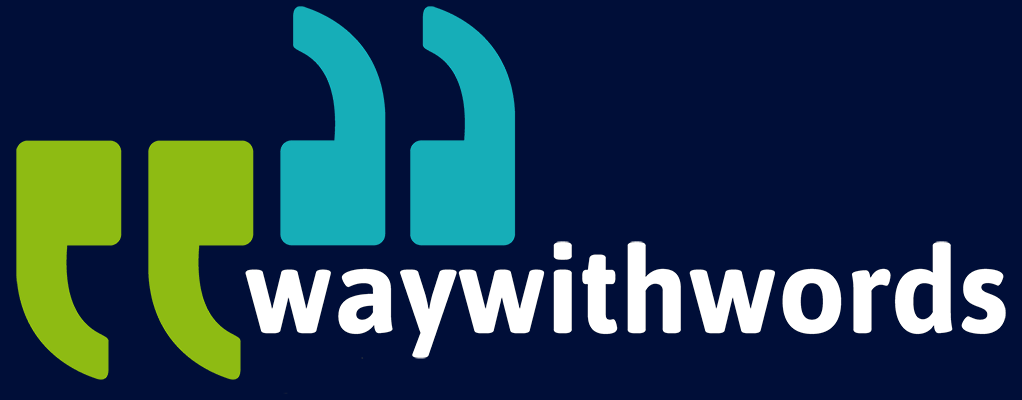Speech-to-Text Data Preparation: Best Practices and Techniques
How do I Prepare my Data for Speech-to-text Conversion?
Speech-to-text systems have become central to everything from AI training and voice recognition platforms to linguistic research and multilingual accessibility solutions. However, no matter how advanced the transcription engine or speech data innovations are, its output is only as good as the input it receives. This is why Speech to Text Data Preparation plays such a vital role in the development of effective, ethical, and scalable STT solutions.
Professionals across fields—AI developers, data scientists, linguists, and academic researchers—face common challenges when working with raw speech data. Inconsistencies in formatting, low audio quality, misaligned transcripts, and demographic imbalance can derail a project entirely if not handled with care.
Whether preparing corpora for machine learning or cleaning audio files for manual transcription, your dataset must be organised, diverse, and noise-free.
Here are three frequently asked questions that often arise when dealing with this type of data:
- What is the best way to clean and annotate large speech datasets for STT applications?
- How do I deal with background noise, silence, or low-quality recordings?
- Are there specific tools or formats I should use for STT data preparation?
This short guide answers these and other important questions, breaking down the key processes, tools, and emerging innovations in Preparing Data for STT and effective Data Cleaning Speech Data workflows.
Preparing Data – Important Guidelines
1. Key Techniques for Cleaning and Preprocessing Speech Data
Cleaning and preprocessing speech data is the first step toward ensuring high transcription accuracy. Unprocessed data may contain background noise, inconsistent volume levels, long silences, and overlapping speakers—issues that undermine the effectiveness of any speech-to-text engine.
Silence Trimming: Removing unnecessary silences at the beginning or end of audio files reduces wasted processing time. Tools such as SoX (Sound eXchange) and Audacity are commonly used to automate silence trimming based on decibel thresholds.
Volume Normalisation: Normalising volume ensures consistent amplitude across your dataset. Inconsistent loudness can negatively impact acoustic feature extraction and increase model error rates.
Sample Rate Conversion: Most STT engines require a consistent sample rate (typically 16kHz). Audio files recorded at different sample rates should be converted to a common standard to maintain compatibility.
Noise Filtering: Use high-pass filters and AI-based denoisers like RNNoise to remove environmental noise, hums, or hissing. Spectral subtraction and Wiener filters can also be useful for suppressing unwanted frequencies.
Speaker Diarisation: Separating speakers within the audio and labelling them accordingly supports speaker-specific transcription and analytics. Tools like Kaldi and pyannote-audio are suitable for diarisation tasks.
Text Normalisation: Transcripts must follow a consistent format. This involves standardising date formats, numbers, contractions, capitalisation, and symbols (e.g., using “[laughs]” for non-verbal elements).
File Integrity Checks: Check for corrupted or truncated files, verify matching audio-to-text file durations, and ensure correct file naming. This improves the automation pipeline and prevents downstream errors.
Properly cleaned and pre-processed data is a critical investment—enhancing accuracy, reducing resource waste, and supporting scalable Speech to Text Data Preparation.
2. Standard File Formats and Labelling Conventions
A lack of standardisation in file formats and labelling makes collaboration, tool integration, and long-term dataset management difficult. Adopting consistent formats and conventions is essential for seamless Preparing Data for STT operations.
Audio Formats: WAV files with PCM encoding are widely accepted due to their lossless nature. FLAC is a suitable alternative when file size reduction is necessary. MP3 and other lossy formats should be avoided for training data due to audio degradation.
Transcript Formats: Use machine-readable formats such as TXT, CSV, JSON, or XML. These formats are supported by most STT tools and are easy to parse. ELAN, Praat, and TranscriberAG are commonly used tools for transcription and export.
Timestamps: Word-level timestamping improves model performance and is necessary for tasks like subtitle creation. Tools like Montreal Forced Aligner and Gentle can auto-insert timestamps.
Speaker Labels: Use a standardised scheme such as SPK1, SPK2, etc., and avoid descriptive labels (e.g., “Man”, “Woman”) that may introduce bias. For multilingual data, tag the language with IETF BCP 47 codes like en-GB or fr-FR.
Metadata Files: Use sidecar files (JSON/XML/YAML) to store metadata including audio conditions, speaker info, and context. This supports dataset filtering and documentation.
Directory Structure: Organise datasets by splitting audio, transcripts, and metadata into clearly labelled folders. This enhances reproducibility and version tracking.
A uniform, standardised file and labelling approach strengthens interoperability, enables large-scale processing, and sets the foundation for high-quality Speech to Text Data Preparation workflows.
3. Noise Reduction and Audio Enhancement Practices
Clear audio is essential to achieving accurate transcriptions. However, many datasets are sourced from environments with unpredictable noise—call centres, streets, homes, or online conferencing platforms. Audio enhancement mitigates these issues.
Control the Environment (Where Possible): When collecting your own data, record in quiet rooms using directional microphones, pop filters, and acoustic panels. Avoid open or reverberant spaces.
Denoising Software: Implement filters such as:\n
- Spectral Subtraction to isolate speech from noise.\n
- Wiener Filtering to adapt to dynamic environments.\n
- AI Tools such as Adobe Podcast Enhance and RNNoise for intelligent noise removal.
Echo Reduction: Use tools like Acon Digital’s DeVerberate or iZotope RX to minimise echo and room reverb, which can distort speech waveforms.
Equalisation and Compression: Use EQ to reduce harsh sibilance or nasal resonance and enhance mid-range clarity. Compression ensures consistent volume, balancing the dynamic range of soft and loud sounds.
Channel Consistency: Convert all audio to mono unless stereo data is required. Mixing channels can introduce phase distortion, affecting transcription accuracy.
Audio Quality Checks: Use spectrogram analysis or visual inspection to identify inconsistencies or noise bands. Visual tools help confirm cleaning efficacy and flag recordings for manual review.
Consistent enhancement makes your dataset more reliable, especially in projects involving varied or crowdsourced input. It also reduces model overfitting to noise, resulting in more robust transcription.

4. Transcription Alignment and Timestamping
Transcription alignment is the process of synchronising written text with its corresponding audio, a core component of effective Speech to Text Data Preparation. Proper alignment ensures that STT systems can learn accurate speech-to-word relationships and allows for precise transcript editing and subtitle generation.
Forced Alignment Tools: Tools like Montreal Forced Aligner (MFA), Aeneas, and Gentle can match transcript text with spoken audio and automatically insert timestamps. These systems perform best when the transcript is accurate and the audio quality is clean.
Manual Corrections: Automated alignment is rarely perfect. Errors can stem from dialects, disfluencies, or mismatches between spoken and written forms. Manual adjustments to word or sentence boundaries are often necessary for training-grade datasets.
Boundary Tags: Use labels like [pause], [overlap], [noise], or [laughter] to mark non-verbal elements. These help inform machine learning models or provide valuable context for linguistic research.
Speaker Labelling with Timestamps: Tag audio segments with speaker IDs and precise timing. This aids multi-speaker diarisation tasks and enables applications like meeting transcription, court reporting, or dialogue segmentation.
Multi-Tiered Alignment: Linguistic projects may require word-level, phoneme-level, and prosodic alignment. Tools like Praat and ELAN allow users to layer these annotations in parallel, adding complexity and detail for research purposes.
Format Consistency: Export aligned data in structured formats (e.g., JSON with timestamp metadata) to allow for automated ingestion into STT model training pipelines.
Accurate alignment isn’t just about timing—it ensures structural integrity between speech and text, which is critical for downstream tasks like training, evaluation, and audio indexing.
5. Dataset Balancing and Diversity Considerations
Bias in training data can severely impair a model’s accuracy, especially for underrepresented accents, dialects, or speaker groups. Careful balancing during Data Cleaning Speech Data ensures equitable performance across diverse user bases.
Speaker Diversity: Aim for a balanced distribution across gender, age, regional dialects, and socio-economic backgrounds. This supports fairer AI applications and improves model generalisation.
Acoustic Diversity: Use data from varied environments—quiet offices, bustling cafés, urban streets, and domestic settings. Exposure to different soundscapes helps your STT model adapt to real-world conditions.
Topical Diversity: Cover a range of speech domains such as healthcare, education, legal, customer service, and casual conversation. This increases the vocabulary breadth and contextual robustness of your dataset.
Equal Utterance Representation: Ensure consistent distribution of short and long utterances. Uneven datasets can skew model training toward specific speech patterns or sentence lengths.
Equipment Variety: Include recordings from different microphones and devices—studio mics, laptop mics, mobile phones—to simulate the audio variability found in deployment settings.
Linguistic Realism: Avoid sanitising speech too much. Include stutters, corrections, fillers (e.g., “um,” “like”), and disfluencies. These real-world quirks improve your system’s practical accuracy.
Regular Dataset Audits: Use visualisations and statistics to evaluate balance. Check for demographic skew, overrepresented domains, or inconsistent recording conditions, and adjust collection strategies accordingly.
Balanced datasets help build fairer, more capable models and reduce reputational and operational risks related to speech model bias.
6. Automated Tools for Data Cleaning Speech Data
Automation can save hundreds of hours when working with large speech corpora. By selecting the right tools for each phase of Speech to Text Data Preparation, you streamline cleaning, reduce human error, and scale efficiently.
Recommended Tools by Task:
Audio Cleaning & Conversion:
- SoX (Sound eXchange): Command-line tool for trimming, resampling, and filtering.
- FFmpeg: Ideal for converting audio/video formats and extracting audio streams.
Noise Suppression:
- RNNoise: Neural network-based denoising tool.
- Adobe Podcast Enhance: AI-driven cleaner that upgrades audio to studio-like quality.
Transcription & Alignment:
- Whisper (OpenAI): Robust for multilingual transcription with built-in alignment.
- Kaldi: Customisable STT toolkit used for academic and commercial projects.
Text-Audio Alignment:
- Aeneas: Uses NLP and audio analysis to synchronise text with audio.
- Gentle: Easy-to-integrate aligner for English-language projects.
Validation & Quality Assurance:
- Datasheet for Datasets: Template for documenting dataset origin, structure, and ethics.
- CheckList: Assists in creating test suites to evaluate linguistic robustness.
Automation Pipelines:
- Use Python or shell scripts, or tools like Apache Airflow, to build workflows that handle ingestion, cleaning, annotation, and export.
These tools help eliminate manual bottlenecks, enforce consistency, and support high-volume projects involving extensive Data Cleaning Speech Data.
7. Annotation Software and Manual Checks
Manual annotation, despite automation, remains a vital part of producing high-quality speech datasets. Human review adds nuance, resolves edge cases, and ensures accuracy in difficult or subjective scenarios.
Top Annotation Platforms:
- ELAN: Supports layered annotation across time-aligned tiers (lexical, phonetic, semantic).
- Praat: Focused on acoustic-phonetic annotation and waveform analysis.
- TranscriberAG: Facilitates quick segmentation and transcription over waveform visualisation.
Annotation Guidelines:
- Establish style guides detailing formatting, punctuation, timestamp standards, and speaker labels.
- Include non-verbal events like interruptions, coughing, or laughter.
- Note disfluencies and emotion where relevant.
Inter-Annotator Agreement (IAA):
- Regularly assign multiple annotators to the same samples.
- Use metrics such as Cohen’s Kappa to measure consistency and improve annotation guidelines.
Feedback Mechanisms:
- Provide reviewers with feedback loops to resolve inconsistencies.
- Host periodic audits and peer review sessions for continued quality control.
Though time-consuming, manual annotation guarantees clarity, correctness, and context that machines often miss—an essential step in high-stakes or research-grade Speech to Text Data Preparation.
8. Using Metadata to Enrich Speech Datasets
Metadata is the informational layer that surrounds your core data—providing structure, meaning, and context. Rich, consistent metadata is essential for managing, filtering, analysing, and reusing your dataset in future Speech to Text Data Preparation projects.
What to Capture:
- Speaker Information: Include age, gender, native language, accent or dialect, and consent information if applicable.
- Audio Attributes: Document sample rate, duration, bit depth, recording device, background noise level, and channel type.
- Session Context: Label the purpose (e.g., interview, dictation, dialogue), location, language, emotion, and speech rate.
- Data Ethics and Consent: For human-submitted data, include a metadata field confirming recording permissions and usage rights.
File Formats for Metadata:
- Use JSON, YAML, or XML for metadata files. These formats are machine-readable and flexible, and they support nesting if detailed descriptors are needed.
- Pair metadata sidecar files with audio using identical filenames (e.g., file001.wav and file001.json).
Metadata Standards and Schemas:
- Employ established standards like Dublin Core or Schema.org.
- For linguistic projects, explore OLAC (Open Language Archives Community) or ISO standards for metadata fields.
Automation Tools:
- Use audio analysis libraries (e.g., Librosa or pyAudioAnalysis) to auto-generate metadata like speaking rate, pitch, and signal-to-noise ratio.
- Machine learning classifiers can infer gender or emotion, though these should be reviewed manually for bias and errors.
Quality Assurance:
- Set up dashboards or validation scripts to track completeness and accuracy of metadata fields.
- Use version control to manage updates and maintain dataset integrity.
Metadata enhances transparency, reusability, and traceability. It plays a foundational role in scaling data operations and should be considered non-negotiable in professional Data Cleaning Speech Data workflows.

9. Case Studies: Successful Speech Data Preparation Projects
Real-world examples offer a practical lens into the value of well-executed Speech to Text Data Preparation. Below are four case studies that exemplify best practices in preparing and managing speech data.
Mozilla Common Voice: A collaborative, open-source speech dataset that collects voice recordings from volunteers around the globe. The project uses:
- Community validation for transcript accuracy
- Diverse demographic and linguistic representation
- Open licensing and transparent metadata
This initiative demonstrates how crowdsourcing and open standards can deliver a high-quality, multilingual speech resource with broad applications.
Google Call Centre AI: Google’s customer service models were built using call centre audio from various industries. Their preparation process included:
- Audio anonymisation to remove sensitive information
- Speaker diarisation for agent vs customer identification
- AI-based noise suppression and contextual labelling
The result: higher accuracy in call summarisation, sentiment analysis, and automatic resolution recommendations.
The British National Corpus (BNC): An academic treasure used for decades, the BNC includes:
- Thousands of hours of British English
- Detailed speaker metadata and phonetic alignment
- Standardised transcription conventions
Its methodical preparation made it a gold standard for both linguistic analysis and AI model training.
TED-LIUM Corpus: Compiled from TED Talks, this dataset features:
- Clean audio with aligned, high-quality transcripts
- Word-level timestamps
- Metadata on speaker, topic, and language
TED-LIUM is now used in benchmark testing and academic research, demonstrating the long-term value of clean, structured datasets.
These examples underline the role of rigorous Data Cleaning Speech Data in creating high-impact, reusable resources for research, product development, and public service.
10. The Future of Speech Data Preparation and Cleaning
The field of Preparing Data for STT is evolving rapidly. Innovations in automation, inclusivity, and real-time processing are reshaping what’s possible—and what’s expected.
AI-Driven Preparation Pipelines: New systems such as Whisper by OpenAI combine transcription, alignment, diarisation, and noise filtering in one tool. These hybrid solutions reduce setup time and increase accessibility for small teams.
Synthetic Speech and Data Augmentation: Tools now allow developers to:
- Generate synthetic voices to simulate underrepresented accents
- Augment real recordings by modifying pitch, speed, or noise levels
While powerful, synthetic data must be clearly labelled and ethically sourced to avoid misleading outputs or bias amplification.
Edge Processing and Real-Time Cleaning: With edge devices becoming more powerful, some data cleaning—such as noise suppression and diarisation—can be done in real-time, before data ever reaches the cloud. This offers significant gains in speed, privacy, and cost reduction.
Ethical Transparency and Fairness: There is growing pressure on organisations to document dataset origins, representation gaps, and consent processes. Fairness audits and bias mitigation strategies will become embedded into every stage of Speech to Text Data Preparation.
Universal Speech Models: Large-scale efforts like Meta’s Massively Multilingual Speech aim to support hundreds of languages, especially underrepresented ones. These projects are only feasible thanks to automated, scalable, and diverse data preparation strategies.
As these trends unfold, those preparing speech data must combine technical excellence with ethical responsibility—ensuring that data remains fair, representative, and fit for purpose.
Key Tips for Preparing Speech Data for STT
- Start With High-Quality Audio: Minimise issues at the source by ensuring clean, well-recorded audio using proper equipment.
- Standardise File Structures and Labels: Consistency across file types, naming conventions, and metadata simplifies automation.
- Use Both Human and Machine Review: Combine automation with manual review to enhance accuracy and catch edge cases.
- Document Your Dataset Thoroughly: Metadata, style guides, and change logs improve usability and reproducibility.
- Diversify Your Data Collection: Include a wide range of speakers, languages, and environments to ensure fairness and robustness.
High-quality Speech to Text Data Preparation is not a step to rush or overlook. It directly impacts the reliability, scalability, and ethical standing of speech recognition systems and AI-driven transcription services. Whether you’re processing customer support calls, academic interviews, or podcast recordings, your data must be cleaned, structured, balanced, and well-documented.
In this short guide, we explored:
- Preprocessing and cleaning techniques
- Standardisation of formats and labels
- Tools for automation and validation
- Annotation workflows and metadata strategies
- Real-world examples and upcoming innovations
Professionals working in AI, linguistics, or data science should treat Preparing Data for STT as a strategic investment. Strong foundations result in better model performance, fewer errors, and datasets that stand up to scrutiny. The success of your transcription project starts—not with your model—but with your data.
Further Resources
Wikipedia: Speech Recognition: This article provides an overview of speech recognition technologies and methods for data preparation, essential for understanding how to prepare data for speech-to-text conversion.
Way With Words: Speech Collection: Way With Words excels in preparing data for speech-to-text conversion, ensuring high accuracy and reliability in transcription services. Their tailored solutions streamline data preparation processes, enhancing efficiency and quality for clients worldwide.
